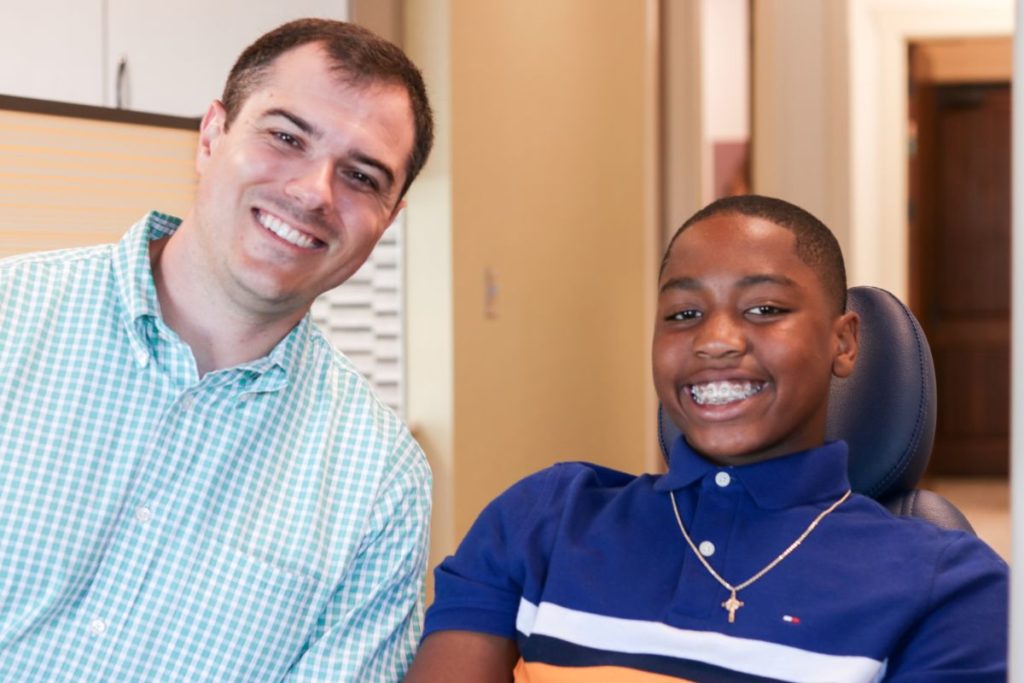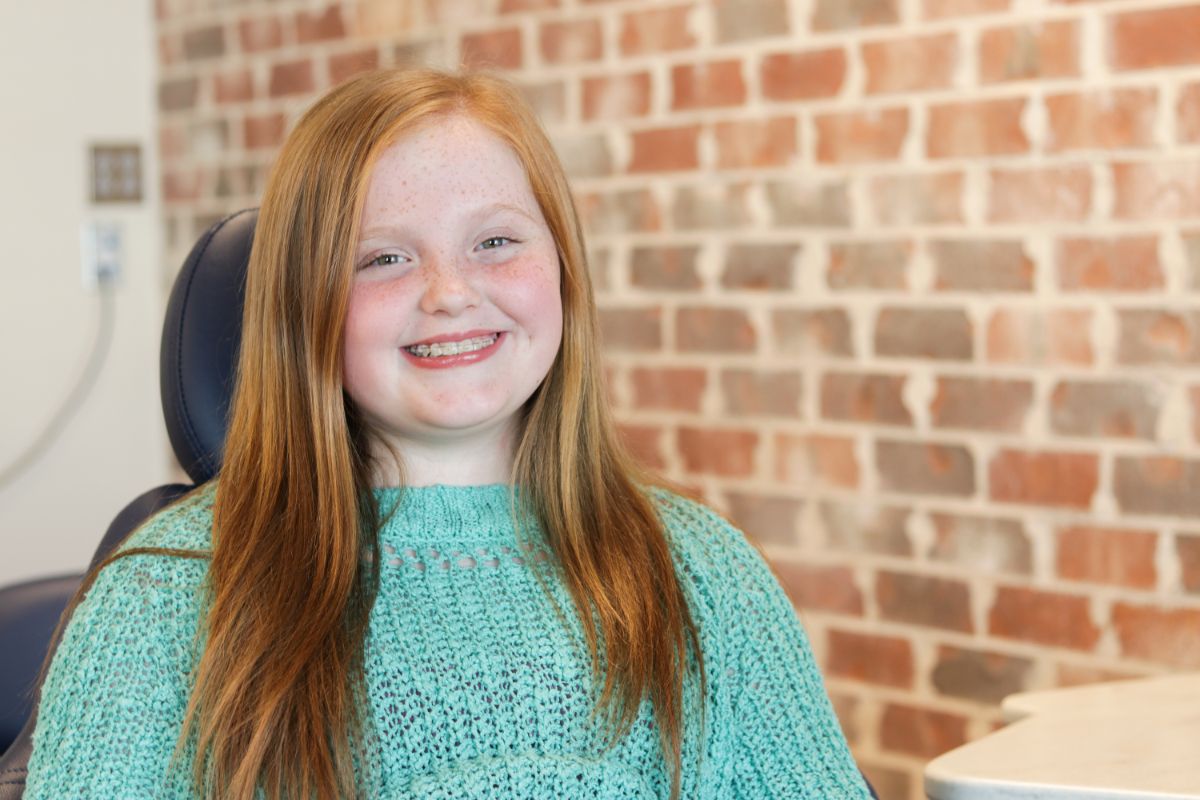Orthodontic treatment comes with a lot of benefits. It can straighten teeth, improve oral health, boost self-confidence, and so much more! While many people think of orthodontics as something for tweens and teens, the treatment process can begin much earlier. We’re proud to offer early childhood evaluations and interceptive treatment here at Designer Smiles by Benton, but what does that mean? Keep reading below to find out!
The importance of early orthodontic evaluations
The American Association of Orthodontists recommends every child have an initial orthodontic screening by the age of seven, and so do we. These early evaluations give orthodontists like Dr. Benton the opportunity to identify and treat any potential issues before they have the chance to become more serious. This helps to set kids up for a lifetime of healthy and happy smiles!
When you schedule a free consultation for your child in our Oxford or Pell City office, Dr. Benton will check their current dental growth and development. This will allow him to determine the need and optimal timing for any orthodontic treatment. Many parents worry that these evaluations will lead to immediate treatment, but that’s true for only a small percentage of the young patients we see. Most will do fine with regular monitoring, which we provide at no additional charge. If problems are found in a child between the ages of 6-9, interventional or two-phase treatment may be recommended.

What is two-phase treatment?
If we find an issue with the growth and development of a young child’s teeth or jaw, it’s essential to begin the proper treatment at the most optimal time. Doing so will help us create space for the appropriate development and eruption of their permanent teeth. It can also enhance jaw growth, giving kids straighter teeth, better oral health, and a more symmetrical smile! We’re able to accomplish this by using something called two-phase treatment.
As the name implies, two-phase treatment involves a child receiving orthodontic treatment at two separate times. There’s also a rest period in between the two phases. Although many children won’t require immediate treatment, there are some issues that do need to be addressed in early childhood. These will typically fall into one of the following categories.
- The child shows signs of a particular problem that we want to keep from developing (preventive treatment)
- The child already has a developing problem that we now want to intercept (interceptive treatment)
- The child’s jawbones appear to need a bit of guidance as they grow (growth modification)
We believe that following the typical patterns of childhood growth and development gives the best results. A careful, proactive approach like this means Dr. Benton can identify, improve, and correct orthodontic issues at the most opportune time. Many common dental problems can be treated easily in a growing child but may require more invasive treatment as they get older, especially once the jaw bones stop growing.
Dr. Benton is often able to achieve lasting results for patients with Phase 1 treatment. In some cases, it can even lessen the impact of other problems! However, most patients will still require a second phase of treatment in order to complete the process of total alignment.
Phase 1
We use Phase 1 treatment to help a child’s jaw develop in a way that better accommodates all their permanent teeth. This can improve a growing child’s ability to bite, chew, and digest their food more effectively. It can also improve the way the upper and lower jaws fit together and reduce the risk of tooth damage due to crowding, misalignment, or malformed jaws. If your child is experiencing any of the following issues, they may respond well to Phase 1 treatment.
- Crooked, crowded, or gapped teeth
- Protruding teeth
- Teeth that don’t come together correctly
- Harmful oral habits that may affect their dental development
- Speech problems
- Jaw out of proportion to the rest of the head
- Emerging permanent teeth that are being obstructed by baby teeth
Rest period
With any orthodontic treatment, we’re working to achieve long-term stability. We want the patient’s teeth to stay in their new positions so they can enjoy a straighter smile for many years to come! Once the first phase of treatment has been completed, the remaining permanent teeth should have a clear path to erupt. We will typically suspend any orthodontic treatment during this time to give the teeth, jaws, and mouth a break while the adult teeth are emerging. We can keep the teeth stable throughout the rest period by using either a space maintainer or a non-removable retainer.
Phase 2
Phase 2 treatment is when everything begins to click into place! We’ll generally initiate this phase once all of the child’s permanent teeth have erupted. Braces or clear aligners are often used to achieve the final alignment. Once Phase 2 is complete, we’ll provide the child with a fixed bonded retainer or a removable retainer to ensure long-lasting results.

Improve your child’s oral health with help from Designer Smiles by Benton
As noted above, early treatment won’t be necessary for many of the children we see. However, it can be incredibly beneficial for those who do need it! Addressing your child’s orthodontic issues early on can also help prevent the development of more severe problems later on, saving your family time and money.
Early childhood evaluations, monitoring, and two-phase treatment are all excellent tools for helping your child maintain a healthy smile. If treatment is needed, Dr. Benton will create a personalized treatment plan to improve their tooth and jaw alignment and restore their bite function. When you trust your child’s smile to our expert team, you can expect long-lasting results and a smile that’s both fully functional and beautifully aligned!
Do you have a young child ready for their first orthodontic evaluation? We’d love to meet you both and take a look at their dental development so far. Call or text today to schedule a FREE consultation with Dr. Benton!


